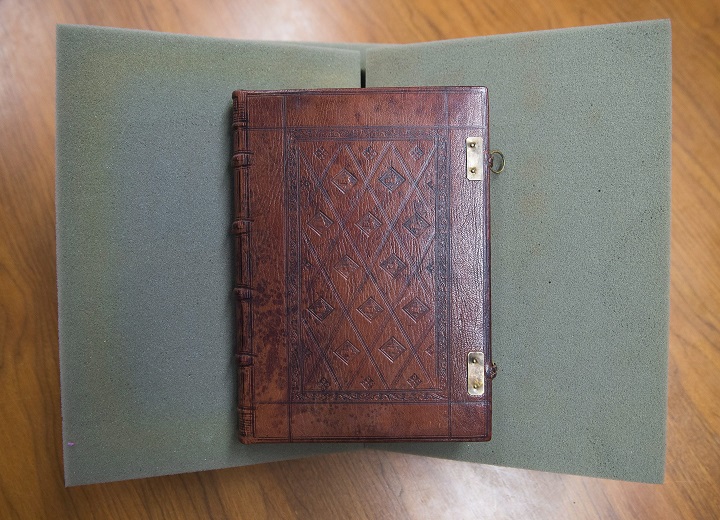TORONTO – The University of Toronto says it now owns the oldest English-language book in Canada, a 15th century text that introduced ancient ideas to new audiences.

The book is an English translation of essays by Roman politician Marcus Tullius Cicero – “De amicitia” (Of Friendship) and “De senectute” (Of Old Age) – published in 1481 by William Caxton, the first person to print English language books.
The printed text, which is now part of the collection at the university’s Thomas Fisher Rare Book Library, carries the first translation of classical texts to English, said PJ Carefoote, the university’s interim head of rare books and special collections.
“A book like this is part of that whole transition that’s going to bring western society out of the Middle Ages into what we now call the modern era, with the Renaissance and the Reformation,” said Carefoote.
“It’s an important text from the point of view of what it does for reviving learning in the west, that people now have access to something like Cicero … in their own tongue.”

Get daily National news
The book, which discusses the ideas of old age and friendship and links the two concepts, came just a few years after the first book printed in English – “The Recuyell of the Histories of Troye” – which Carefoote said was printed by Caxton in either 1473 or 1474.
Printed English books from that period are particularly hard to come by because of their significance to the history of the language, Carefoote said.
Caxton’s books, which translated established languages like Greek and Latin and were mass produced, helped standardize English at a time when it was a new language with varying dialects, Carefoote explained.
“When Caxton, this printer, comes along and starts translating works … multiple copies of an English language (book) – and he chooses specifically the London dialect – are being spread across England,” he said.
“English starts to become English, it starts to unify.”
A book dealer contacted Carefoote about the Caxton text last year, he said, and donations from the public helped the university acquire the book.
The way the book is written means it may not be easy for a first-time reader to immediately understand, said Carefoote.
“It’s kind of like reading Shakespeare for the first time – it takes a little bit of time,” said Carefoote, who added that the font can also be difficult to understand at first.
“People look at it and say ‘oh, I’m not going to be able to read that,’ and I say just look at it for five minutes, and they all say that after you get used to the form, you read it like anything else.”
Having the book at the University of Toronto means that students in the book history and print culture program, who study the origins of technology and culture, can use it as study material, Carefoote said, noting that several other departments are interested in the text as well.
The book also marks the Fisher library’s 15 millionth book, which Carefoote said was just a happy coincidence.








Comments